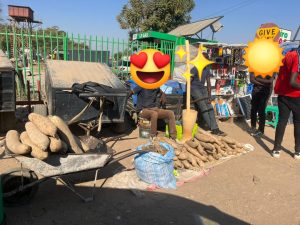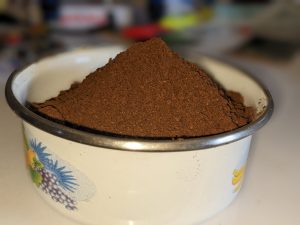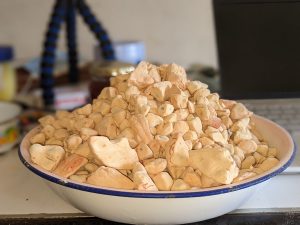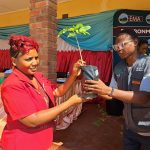Crisis in Conservation: Protecting Kigelia Africana and Baobab Trees in Zimbabwe”
In recent weeks, a viral audio clip circulating on social media praised the multifaceted benefits of the sausage tree (Kigelia africana). It claimed that products derived from its roots, bark, and fruit are not only sought after locally but are also sold on international platforms like Amazon and in Western markets for medicinal purposes. This newfound interest has spurred a wave of exploitation, driven by claims that Kigelia africana can treat cancers, sexually transmitted diseases, stomach ailments, and even serve as an aphrodisiac or libido enhancer.
While this information initially encouraged local communities to explore the tree’s medicinal potential, it has also led to significant overharvesting. I vividly recall a recent incident where a friend asked for sausage tree fruit, prompting me to check several trees in Mutare City, only to find all their fruits had already been harvested.
Today, social media is ablaze with images of vendors selling Kigelia africana fruit, all fueled by the aforementioned audio. However, this rush to market these products lacks proper research from both local herbalists and scientists. The uncontrolled harvesting and street-corner sales pose risks to consumers, as the safety and efficacy of these products remain largely unverified.
Arguments in favor of selling the fruit to prevent tree cutting overlook a critical aspect of conservation: forest rejuvenation depends heavily on both natural and assited seed dispersal. If all pods are indiscriminately harvested and sold, there will be no seeds left to support reforestation efforts. Furthermore, practices such as debarking for bark and root extraction happening in the background compromise tree health. De-barking opens pathways for fungi and diseases, eventually leading to the demise of these vital trees. Ring debarking, a common practice, severs the tree’s nutrient transport system, effectively starving it of vital nutrients and water.
Moreover, the roots of Kigelia africana are also under siege for their purported medicinal benefits, further endangering the species. Thus, the appearance of Kigelia africana fruits in markets merely scratches the surface of a larger, more ominous trend. If current practices continue unchecked, it’s plausible that Kigelia africana could soon be listed as critically endangered on the IUCN Red List. This outcome would not only threaten biodiversity but also impact countless animals dependent on the tree for habitat and food. The tree’s role as a crucial source of nectar and pollen for pollinators underscores the broader ecological implications of its decline.

Sausage tree fruits
The plight of Kigelia africana echoes similar concerns surrounding the baobab tree (Adansonia).
Yesterday, I represented Environmental Buddies Zimbabwe Trust at a women’s symposium hosted by Zidawu Zimbabwe . During the workshop, I expressed my concerns about the future of reforestation projects, particularly for baobab and sausage trees. This concern arose after visiting various women-led livelihood project booths showcasing processed baobab seed into coffee, and oil.

Baobab Coffee
Once celebrated for its nutrient-dense pulp, baobab products have gained international popularity in recent years for their health benefits. The baobab fruit pulp is rich in vitamin C, B vitamins, potassium, magnesium, iron, calcium, and fiber. Its incorporation into diets may aid weight loss, balance blood sugar levels, reduce inflammation, and enhance digestive health.

baobab fruits
Previously, baobab extraction primarily focused on the pulp, leaving seeds available for nursery planting and reforestation projects. However, there has been a notable shift towards extracting oil from baobab seeds, which commands a higher market price than the pulp itself. This commercial trend undermines reforestation efforts by depriving them of essential seeds. Additionally, baobab seeds are now used to produce baobab coffee, further straining the availability of seeds for conservation purposes. The overharvesting of baobab bark for mat-making has also contributed to tree mortality.
The potential loss of baobab trees not only threatens pollinators like bats but also jeopardizes the livelihoods of communities reliant on the tree for nutrition and income. Beyond its ecological importance, the baobab holds profound cultural and spiritual significance. Revered for its longevity and resilience in harsh environments, the baobab is often regarded as a symbol of strength and endurance in various African myths and legends. It serves as a bridge between the spiritual and physical realms, enriching local cultures for generations hense the need to preserve it.
Reflecting on these developments, a childhood folktale comes to mind, warning against the peril of shortsightedness: a baboon who, in a moment of greed, roasted and consumed his last groundnut seeds, leaving his family without seeds to plant and no means to secure their food supply. Today, the same heedlessness applies to the indiscriminate exploitation of indigenous plants. The question persists: “Ko tikaramba tichidya mbeu, tozosima chii?” – Where will tomorrow’s seeds come from if we exhaust them today?
My key question for the women at the workshop was whether they had considered planting any trees themselves, given that many of the seeds are currently being processed into finished products. I empathize with the women, especially those from dry areas such as Marange, whose livelihoods depend heavily on forest resources to support their families. However, it’s crucial to operate these livelihood projects sustainably. Notably, none of the women have participated in planting the trees they are exploring.
As we confront these challenges, the urgent need for sustainable forest resource management becomes apparent. We can harness the benefits of our forests while ensuring their preservation for future generations. Continued vigilance is essential, especially as Zimbabwe’s IUCN Red Data list grows longer, highlighting the ongoing loss of vital forest resources. Through responsible stewardship, we can mitigate the risks posed by overexploitation and safeguard our natural heritage for the benefit of all.
Environment Buddies Zimbabwe continues to educate communities on the need to preserve existing indigenous forest and also promote the planting of indigenous trees.
Latest posts by Shamiso Winnet Mupara (see all)
Recommended Posts



